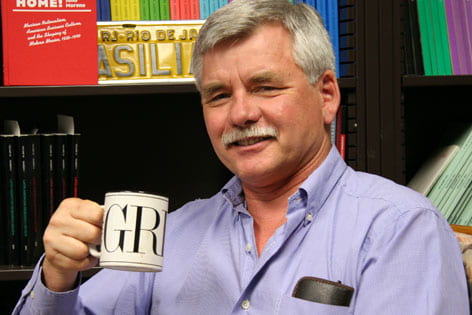Coffee: the drink that changed the world
With 400 million cups brewed each day, the United States has staked its claim as the top coffee-consuming nation.

Have you had your three cups today?
That’s roughly how many servings are consumed daily by each of the more than 100 million American adult coffee drinkers. With 400 million cups brewed each day, the United States has staked its claim as the top coffee-consuming nation.
While our affinity for java and the colossal size of the industry are undeniable, the true story of coffee’s Old World origins and its eventual rise in America is not as clear.
Steven Topik, UC Irvine history professor and coffee expert, notes that many popular stories and legends about coffee’s origin are not entirely true.
“Sometimes they are used to help sell coffee because they add color and make the products feel more exotic,” Topik says.
Topik, who researches the world economy through the study of commodities – particularly coffee, is writing a book on the history of the world’s second-most-traded commodity after oil. He explains the real stories behind a handful of popular coffee legends.
Legend: The word “coffee” comes from Kaffa, a coffee-growing region in Ethiopia.
Truth: Though coffee grows natively in Kaffa, ‘coffee’ is a corruption of the Arabic word ‘qahwa.’ This previously was a word for ‘wine’ and perhaps ‘stimulant.’
Legend: Kaldi the goat herder (or shepherd) first discovered coffee in either Ethiopia or Yemen in the year 800 when his goats (or sheep) began dancing after chewing on a coffee bush.
Truth: “No one person discovered coffee. It may be quite old – it was first fried and chewed or eaten in a sort of pancake – but as a drink, coffee probably dates from the 15th century. The idea that a goat chewed it is possible, but not documented. We do know the concept behind perhaps the world’s most expensive coffee, Kopi Luwak – made from beans that have passed through the digestive systems of small mammals called palm civets in Indonesia – is not new. Civets were raised in Ethiopia by the early modern period and are said to have been responsible for moving coffee east from Kaffa.”
Legend: Ethiopia is the birthplace of coffee drinking. The storied Ethiopian coffee ceremony – an elaborate ritual of roasting, crushing or grinding, and brewing coffee to honor guests – is an ancient practice.
Truth: Ethiopians did not drink coffee early on. Christians abhorred it, and Muslims and animists chewed it. People across the Red Sea in Yemen were first to domesticate the coffee tree and use its fruit for a beverage. They made teas from the cherry-like fruit, leaves and husk, and prepared a roasted, ground drink from the seed, which we call a ‘bean.’ The Ethiopian coffee ceremony probably started in the 19th century. Ethiopians did not drink much coffee until the 20th century.
Legend: The first European coffee house opened in Oxford, England, in 1648.
Truth: The first European coffee house probably opened in Istanbul in 1553 near the Egyptian Spice Market. This legend forgets Istanbul is, in fact, in Europe. Ottoman rulers came to control a large part of Eastern Europe and spread the coffee-drinking habit.
Legend: Americans began drinking coffee after the Boston Tea Party when, as a sign of resistance to British tyranny symbolized by the tea tax, they dumped a shipment of tea into Boston Harbor. With the subsequent tea boycott, coffee became the symbol of American liberty.
Truth: Almost everything is wrong about that story. American smugglers resisted the tea tax because they resented that the tax was lowered so people would buy from the monopolist East Indies Company. The men who dressed up as Indians and threw the tea into the harbor were in part cooperating with smugglers who did not oppose tea drinking – they just wanted to be the leading tea merchants.
Americans continued to drink tea after a brief boycott. In fact, we drank far more tea a century later than we did in the 1770s. Americans turned to coffee not because it was a sign of national liberty, but because it became more affordable as the French Caribbean colony of Haiti and then Brazil revolutionized the scale of coffee cultivation. Yankee shippers brought back coffee as part of a triangular trade that included bringing slaves from Africa to the coffee-growing Caribbean and then to Brazil.
Coffee certainly did not seem like a liberty drink to the millions of slaves brought to the New World to grow it.
Legend: John Smith – of Pocahontas fame – introduced coffee to the British colony that later became the United States.
Truth: Smith certainly was aware of coffee. The Oxford English Dictionary cites Smith as one of the first to mention the word ‘coffee’ in English. There is evidence Smith had access to a mortar and pestle, which could be used to grind beans or maize, but even if Smith had brought coffee to the Virginia colony, he could not grow it because of the cold winter climate. Very little brew was consumed in British America before the 18th century. Smith was one of the first European tobacco smokers and one of the first English coffee drinkers, but he did not cultivate coffee nor spread the habit in Virginia.